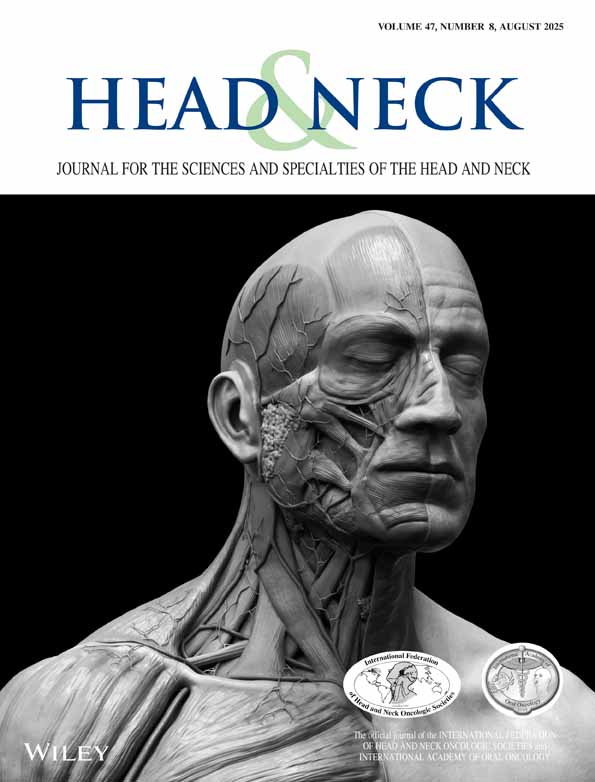Promising results with chemoradiation in patients with sinonasal undifferentiated carcinoma
Abstract
Background.
Sinonasal undifferentiated carcinoma (SNUC) is an uncommon malignancy associated with poor prognosis. The optimal treatment approach for SNUC has not been established was performed.
Methods.
A retrospective review of all patients with SNUC seen at the Peter MacCallum Cancer Centre over a 12-year period.
Results.
Ten patients with SNUC were identified, with nine having locally advanced disease (T4). Seven were treated with three cycles of platinum and 5-fluorouracil followed by radiation with two cycles of concurrent platinum. In these seven patients, the 2-year progress on-free survival was 43% (95% CI, 11% to 82%) and 2-year overall survival was 64% (95% CI, 23% to 91%). One patient with a T1N0 nasal cavity tumor treated with radiation alone has not relapsed. Two patients who were treated with initial surgical resection, prior to referral to our institution, received postoperative radiation, but they subsequently had relapses and died.
Conclusion.
Induction chemotherapy followed by concurrent chemoradiation is promising treatment strategy for SNUC. © 2004 Wiley Periodicals, Inc. Head Neck 26: 435–441, 2004.




